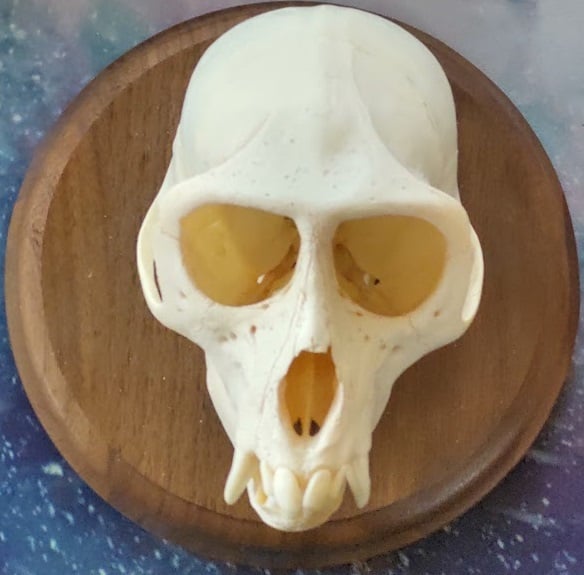Allow me to geek out a bit here, for the sake of the curious. Feel free to correct me if you’re smarter or more pedantic than me.
Basically, the way seedless watermelons work is that you “breed” two genetically incompatible watermelon varieties together, so that the fruit they bare are seedless. If you took a “seedless” watermelon plant and bred it with a compatible variety, it would produce seeded fruits.
The slightly more detailed version of this: Unlike most animals, plants can have more than one set of chromosomes and be perfectly fine. In fact, having multiple sets of chromosomes can actually be beneficial for plants. Typically plants, like animals, have 2 sets of chromosomes, but sometimes by random chance or otherwise, they can have double the amount (or more). If you cross a plant with a normal amount of chromosomes (2N) with a plant that has double the amount of chromosomes (4N), you get something in between (3N). These 3N plants are often fertile and produce seeds when crossed with other 3N plants, but usually they are not fertile when crossed with 2N or 4N plants. They’ll still produce their signature fruit, basically a hormonal response to being pollinated, but there will be no seeds or only underdeveloped, sterile seeds because the parents aren’t compatible.
Close but not quite. 3N plants are sterile. This is because the odd number of chormosomes cannot line up during meiosis and form gametes.
They use diploid pollen 2N pollen to trigger fruit formation but the resulting fruit is parthenocarpic. The white pips and even the occasional colored hard seed coat does not contain an viable embryo.
Crossing of plants with different numbered chormosomes can create fertile offspring if the resulting ploidy is even. For example crossing wheat (6N) with cereal rye (2N) creates Triticale (4N). The Triticale is fertile.
3N plants are sterile.
That’s not universally true, though. In many instances, 3N plants have reduced fertility, but can still produce viable seed. Even the seedless watermelons, the 3N types, can sometimes produce viable seeds.
Me: starts reading.
Me: about a quarter of the way in…huh?
Me: skims the rest of the message. Huh???
Me: I don’t get it. I’ll just make a dry unfunny joke, and hope that being meta self reflective joke about it will confuse people into thinking it’s funnier than it is.
I’m with Seedless watermelons against Christians.
Seedless Watermelons against Catholics.
SWAC sounds way better than CASW

The detail of capitalizing the last 2 letters of seedless. A+
Go seedless watermelon, I believe in you!
I’d love to see someone bounce of watermelon off the ground lol
This is so dumb, I love it
I hate the existence of seedless watermelons. I seek out seeded watermelons because they were bred for taste instead of seed deficiency. Anybody who lived before seedless watermelons were common know what a real watermelon is supposed to taste like. They have been slowly becoming tasteless and more seedless since the 80s. The first ones called seedless I had were okay, but they also had lots of white, barely formed seeds. The ones nowadays have almost no seeds, but have absolutely no taste. The people who seek out seedless watermelons are idiots.
The story of seedless watermelons.
Originally developed by a scientist in Japan pre-WWII, the technology was picked up by watermelon breeding programs at universities in the South-East U.S. Over the next 30 years the university programs worked to develop the technology. Progress was very slow as it takes 15 generations to create a new female line.
Unfortunately for everyone the universities decided to use their tasteless, bland, long distance shipping types to create these females. The most famous of which is Charleston grey.
Finally in the mid-70’s the universities released the female inbreds to private companies to create seedless watermelons. The private companies crossed tasty, elongated allsweet and crimsons sweet types as a diplod male with the bland grey females. What resulted was the bland seedless types with large white pips and bland flavor. After all 2/3rd of the genetics came from those terrible females.
For the next 25 years all of the seedless watermelons used the same terrible female lines with slightly improved male lines.
Then a breeder from originally from China decided to create new females. He used small seeded varieties from China and Thailand with deep red color and much thinner rinds.
The resulting seedless watermelons had dark red color, tiny little pips, and a slightly bitter flavor. You see the breeder from China failed to recognize the different flavor profiles in the gene pools. Asian watermelons often have bitter flavors that are completely acceptable in those markets but not in European ones.
And thus we are stuck with bland or bitter shitty seedless watermelons at the store.
There was once a brave lady who attempted to buck the trend. She bred the most flavorful delicious seedless watermelon ever seen on the planet. It was almost honey sweet with strong aromatics and not a hint of bitterness. It was crisp and juicy without a hint of mealyness. It was large elongated and looked just like the good old seeded ones. Alas the market rejected them because “they look like seeded types”. She retired early with a big FU to them all.
Wow, humans dumb.
I’m not trying to be contrarian here, and I’m not saying you’re wrong. But knowing how seedless watermelons are developed and produced, it doesn’t actually have much to do with being seedless.
At least in the USA, there are lots of different seedless watermelon varieties. I’ve only grown a small number of them, but they’ve all been great tasting.
Other than under ripe watermelons and random “wild” cultivars, I’ve never had a tasteless watermelon, so I’m slightly skeptical of your comment, to be honest.
Tasteless is a relative thing. It is super rare now to get a good tasting watermelon. I buy them all the time so even the ‘tasteless’ ones are better than nothing and every once in a while there is a little bit of really good towards the heart. In the 80s and 90s it was rare to get a bad one, The rind tasted as good as the whole watermelon nowadays. It would almost have to be a rotten one to be disappointed. I am happy for you that you feel like seedless watermelons taste so good. I wish I could erase my knowledge of what it should be and live in that zone.
People have genetically different ability to detect flavors. Some people lack the receptors to detect the bitter rindlike taste in todays seedless watermelons.




